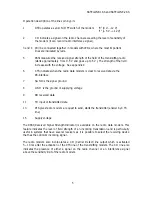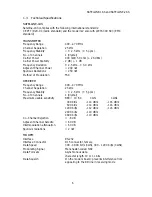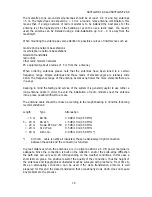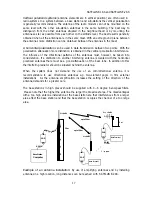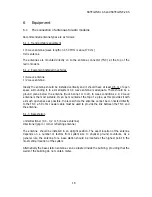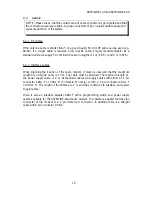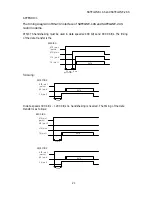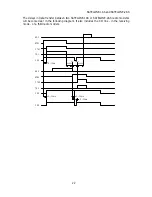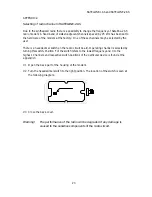
(DTE) and its own clock signal by adding one stop bit if required. The radio data modem
transfers parity bits as they are received.
2.2
Effects of character lenght on transmission
The transmitted data character can be either 10 or 11 bits, the length of these characters is
determined by hard wiring on the modem board.
It is important that the transmission from the data terminal equipment to the radio data
modem matches the selected character length. In the event of a mismatch transmission
errors will be shown at the receiving end as "error characters" and the data transmission will
be discontinued.
NOTE!
The length of the character from the data terminal equipment must
correspond to that of the modem.
2.3
Data Speed
The data speed of the radio modem can be 300, 600, 1200, 2400 or 4800 bits/s. The
data speed is carried out by changes on the modem card.
2.4
Transmission
There are two different methods of initiating data transmission.
1 RTS/CTS handshaking
2 Data connected directly to TD line
The first method using RTS/CTS handshaking has to be used for data speeds of 2400 and
4800 bit/s. This method is initiated from the radio data modem requesting permission to
send. This is achieved by switching the RTS line from an OFF to an ON state. The
subsequent reception of data will cause the CTS line to be raised and the data transmission
will be sent on the TD line. If there is an active radio transmitter on the system with the same
radio channel the CTS line will not be raised.
The second method of transmission operates within the range of 300 to 1200 bit/s. In this
case the transmitter is switched directly to the TD line.
Should a break in transmission occur e.g. caused by a weak radio field, transmission can
only be restarted by switching off the transmission for a period of at least 20 ms before
re-sending.
SATELLINE-1AS and SATELLINE-2AS
9





